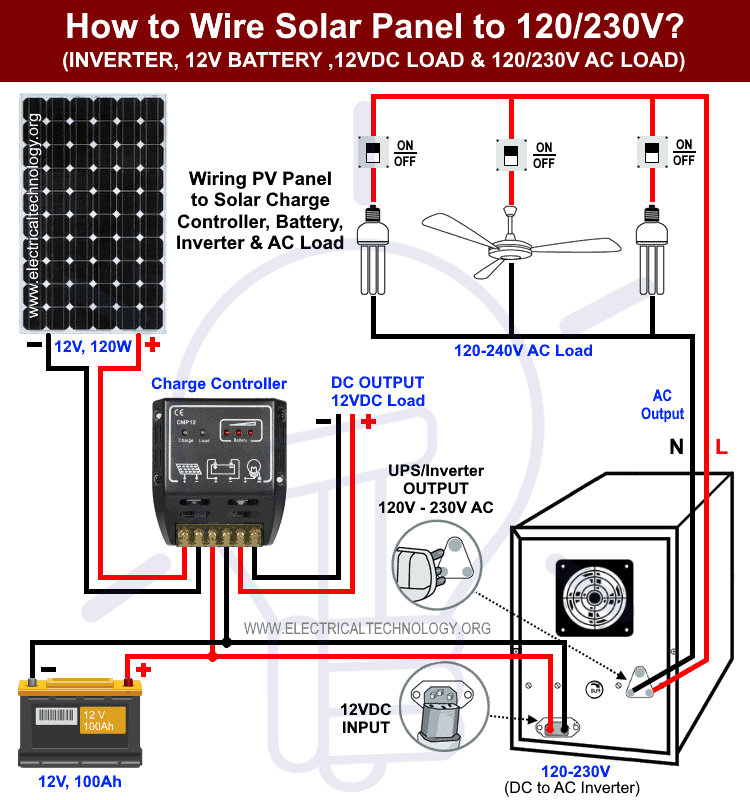PV Panel, UPS-Inverter, 12V Battery, and 120-230V AC Load Wiring
In this lesson on installing extremely simple solar panel wiring, we’ll demonstrate how to connect a solar panel to an AC load using a UPS/Inverter and charge controller.
Additionally, you’ll be able to connect the PV panel to the battery and a direct DC load.
In order to operate the system automatically ON/OFF, we employed a single unit system consisting of a 120W, 12V solar panel, a 100Ah, 12V battery, and a 120/230V Automatic UPS.
The PV panel, solar charge controller (PWM or MPPT), battery, and inverter are the four essential parts of a solar panel installation system that you will require.
Both AC and DC loads may be connected to the PV panel wiring.
A UPS or inverter that utilizes the battery’s stored energy as backup power may power an AC load.
If you don’t need the shade or backup (stored) power for later at night, you may also use it without the battery.
In this manner, the solar panels will use an online UPS to directly power up the AC load.
Additionally, a direct connection between the DC load and the charge controller is possible (only DC load terminals).
A 120W, 12V solar panel is directly linked to the 12V charge controller, as shown in the solar panel wiring schematic below.
The charge controller’s battery connections (Positive & Negative) are linked to the battery and the inverter.
The charge controller’s DC output terminal is likewise wired up with a DC load.
The UPS output terminals are linked to the 120V or 230V AC load (such as fans, lighting, and other appliances).

Both AC and DC loads may be illuminated simultaneously by the whole system.
Remember to pick a system that is rated and well-designed for your demands since you are aware that a single PV panel and battery cannot carry that much load.
Additionally, when many loads are connected to the PV panel at once, the battery’s charging time and rate will be too low.
to prevent overload situations.
Depending on your system needs, you may need to connect numerous devices (solar panels and batteries) in series, parallel, or a mix of these two connections.
The quantity of backup power needed and how much needs to be saved for later use, among other things, must be determined for this purpose.
All the information has been addressed in prior blogs (links added in this post for more explanation).
The good news is that automated UPS wiring allows all power switching processes (from solar power to battery and vice versa) to be totally automatic, eliminating the need for a separate manual or automatic changeover or auto transfer switch to connect batteries and solar panels to load points.










